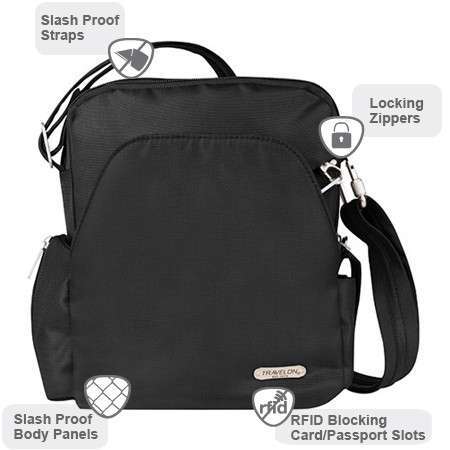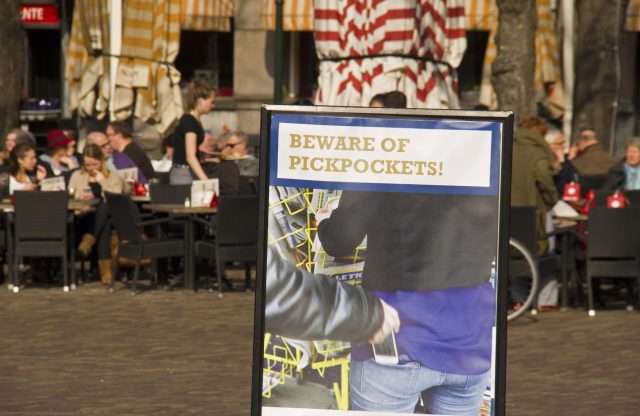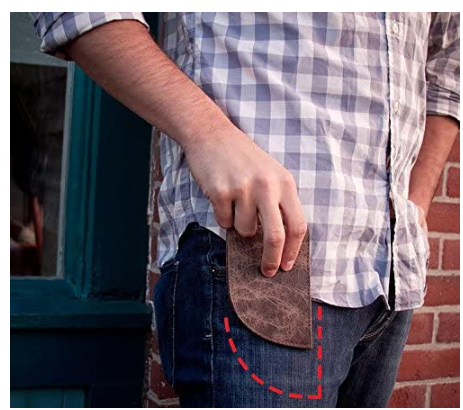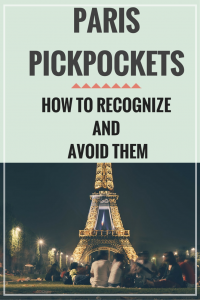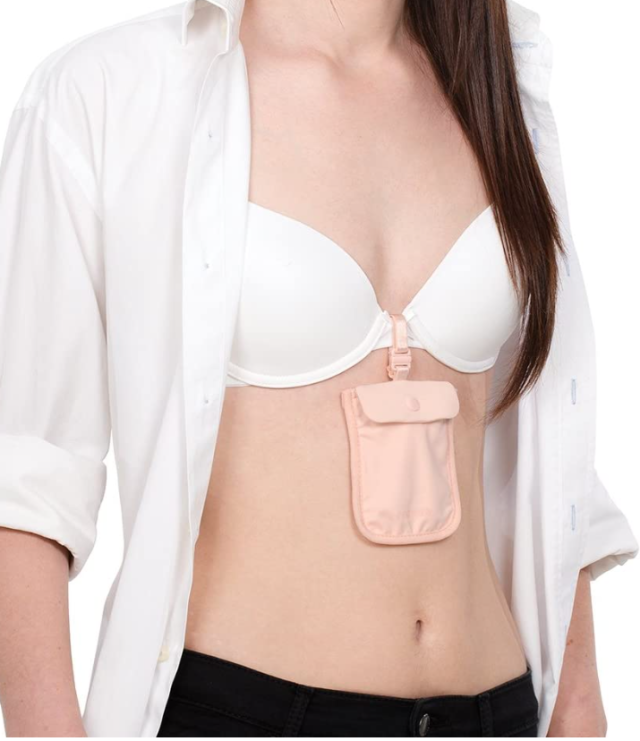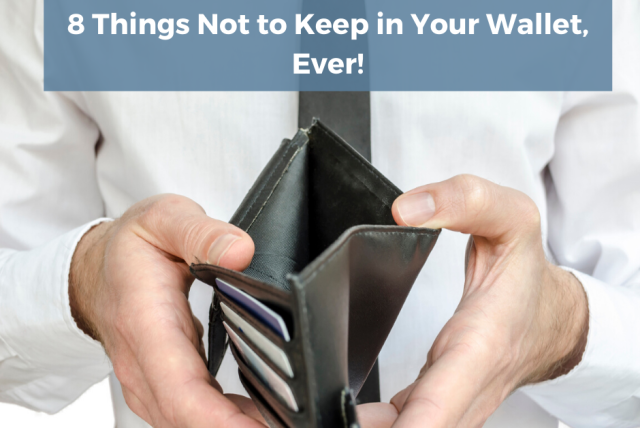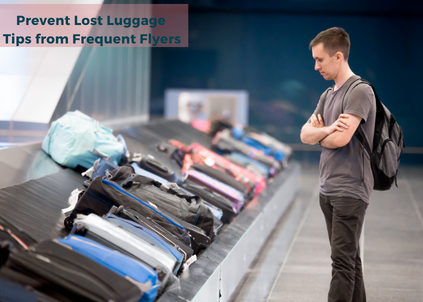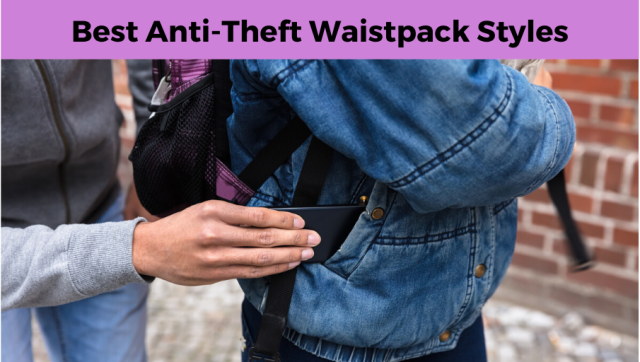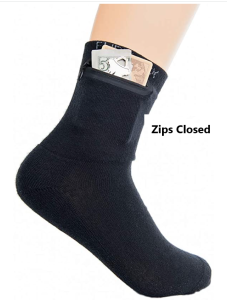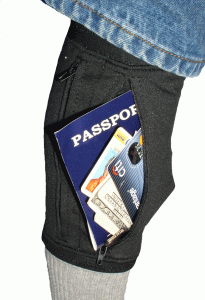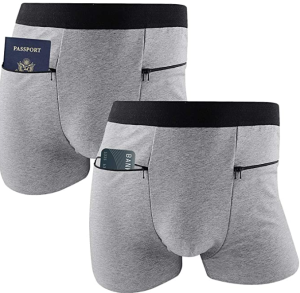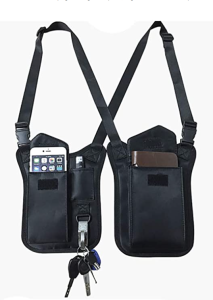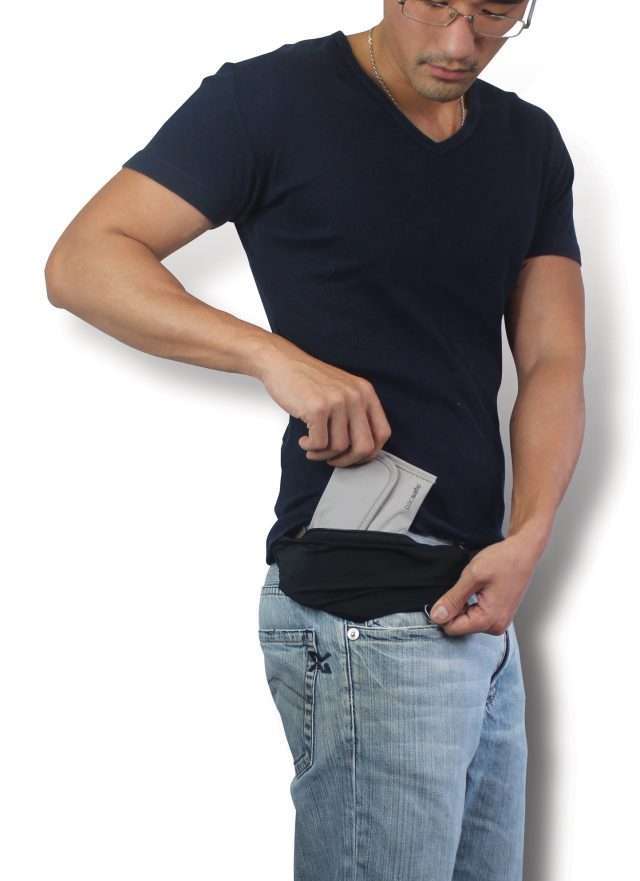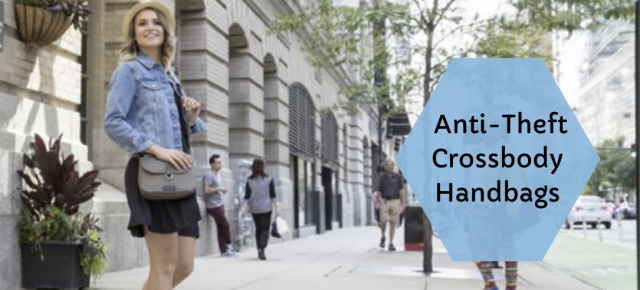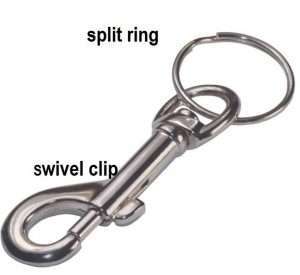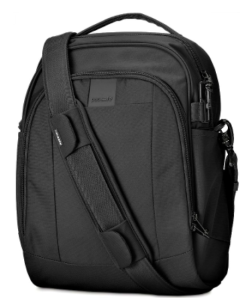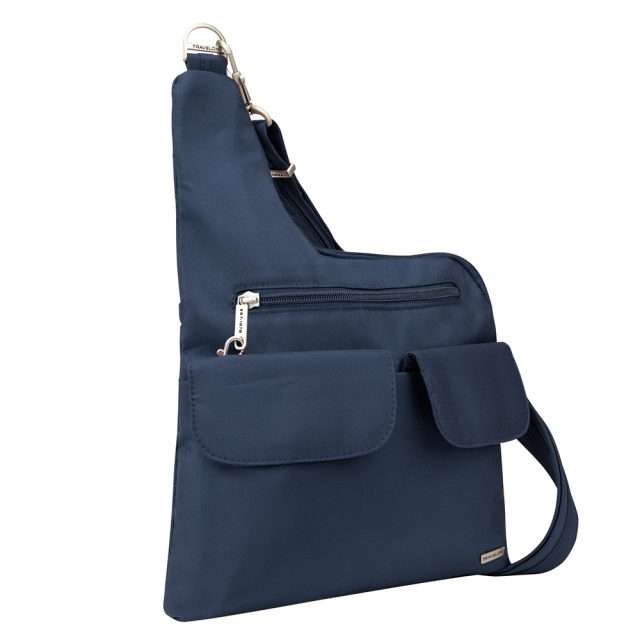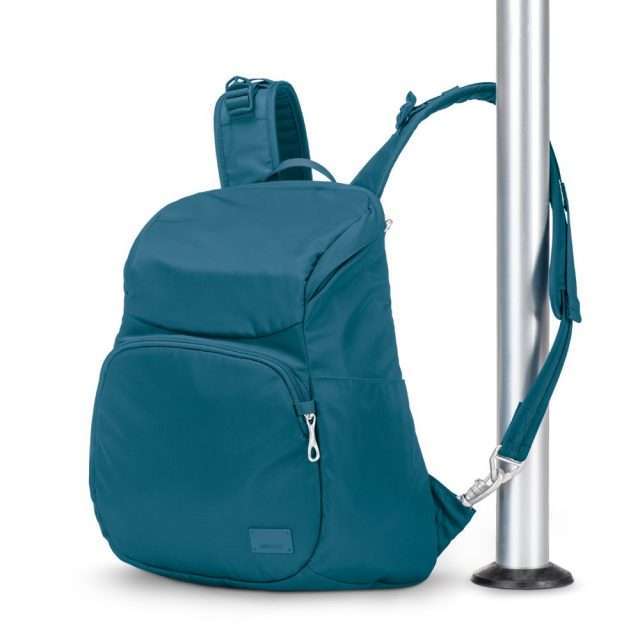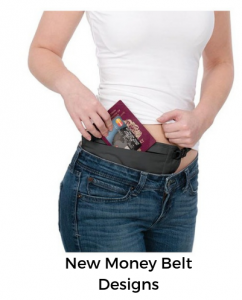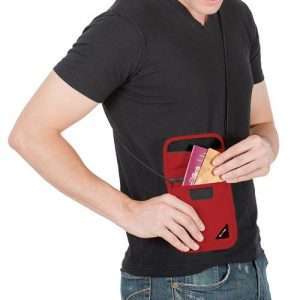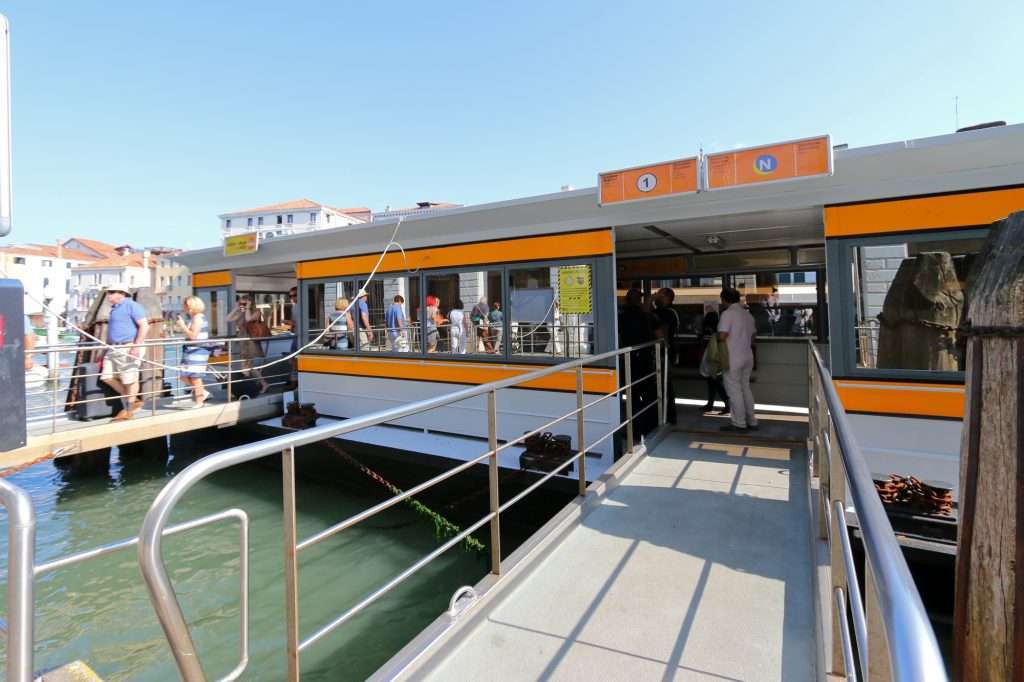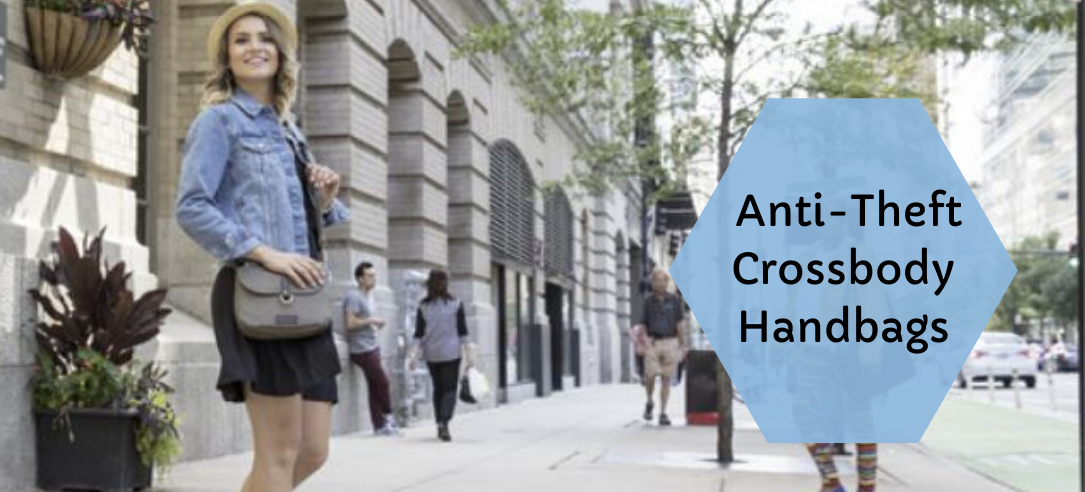Think You’re Savvy Enough to Avoid Pickpockets While Traveling?

Warning found on a European Wall
Ok, so you’re going abroad, you’re not thinking about how to avoid pickpockets well not just yet. The excitement has been building, your luggage is ready to be packed, you’ve got your flights picked, your passport and travel-sized liquids are ready, and you’ve notified your credit card company you’re going overseas. Quite simply you’re prepared! In all likelihood, your trip will be great and you’ll return with plenty of pictures and stories to share with family and friends however, do you know how to avoid pickpockets?
This is not an article advocating you should “travel in fear.” The smart thing to do is be practical, be alert, and be prepared for pitfalls including how to stop or avoid pickpockets. Recognize that there are some people who make a living off of tourists like you. This simple realization alone should be enough to encourage healthy suspicion in certain scenarios keeping you a step ahead of the bad guys.
Falling victim to a pickpocket is not a violent crime, but it can be a big inconvenience as you could end up spending countless hours trying to stop identity thieves, as well as replacing passports and credit cards. Therefore avoiding pickpockets in the first place is the smartest move you can make.
How to Stop Pickpockets
One of the first things you should do is watch how pickpockets operate, here. Pickpockets are typically fast, discreet, and clever. They often are masters of their trade. To reduce your chances of falling victim to a pickpocket, you have to avoid being an easy target – which is what most pickpockets look for to begin with. Being aware of strangers in crowds, and most importantly, looking like a difficult target so the thief passes on you for another victim.
What Does a Pickpocket or Thief Look Like?
Don’t always assume that a pickpocket looks like a transient or bum. Many of the most skilled and sneakiest pickpockets dress very well and may look like businessmen and may carry something official-looking in their hand. Many of these thieves will be women, some with children, just so they can better blend into the crowd. Some very smart pickpockets will pose as tourists with fanny packs, cameras, and even guidebooks. The best pickpocket is the best actor or actress.
Another thing to give additional thought to is the old adage – “don’t judge by appearances.” Some pickpockets work in teams where one of them dresses up in some type of uniform – done as an obvious measure to gain trust. In some Asian countries, pickpockets may dress up in a uniform that to you looks like that of a police officer – however, it is just one of a security officer – but the average tourist doesn’t know the difference. The supposed “officer” becomes real friendly with tourists while his associate makes the “lift” of your wallet from your back pocket or wallet from your purse. Be mindful of these confrontations. Also, be wary of over-friendly children and seniors because they generate much more trust – but can be just guilty of being a thief, scam artist, or pickpocket.
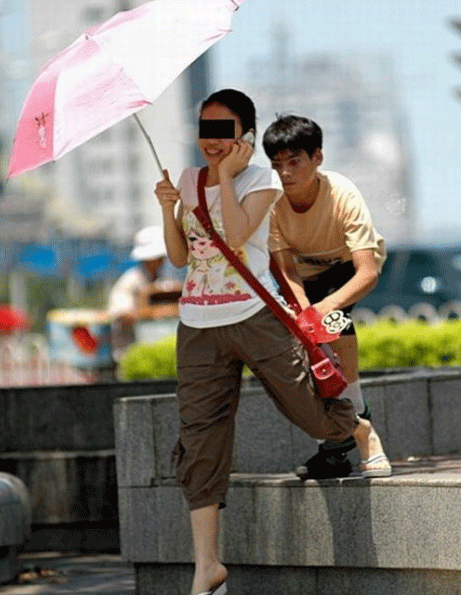
Child pickpocket followed a woman wearing a bag on her back hip
How to Avoid a Pickpocket When Traveling
1. Be a Difficult Target – Make it Hard for Them to Get to You, Walk with Purpose, and Keep Moving
When traveling, it’s common to slow down and take in all the sights. Tourists want to linger in places and take their time. While enjoyable, meandering makes you stand out to pickpockets. Pickpockets know the look of obvious tourists – confused looks, hesitant steps, and visible maps are the perfect indicators of a distracted person and therefore a good target. Take the time before you leave a safe area (a restaurant, your hotel, the train platform) to check your surroundings and directions before heading out. Perhaps write a few key indications (direction and street names) on a post-it for quick reference.
If you do need to stop and figure out where you are – stop somewhere with a wall at your back in order to consult a map or stare at a landmark. If that’s not available, move to a wide-open space where anyone approaching can be seen. Consider ducking into a store for directions or to consult your map. Lastly, walk with purpose. Even if you don’t have a destination in mind, act like you know where you’re going – this makes you a less desirable target. Be especially careful to walk purposefully when in a popular tourist location.

Warning on London Newspaper Stand
2. Be Unpredictable
If you suspect you are being followed/targeted by a pickpocket, change directions, stop and go in a different direction. Enter into the nearest shop for a few minutes to collect yourself and perhaps to make them lose interest. Pickpockets love train stations, bus stations, and subways because people entering and exiting them are very concentrated on getting to their next destination, and their paths are obvious.
3. Be Cautious When Talking to Strangers
Chances are, you look like a tourist more than you would like to, and pickpockets have learned how to recognize a potential mark. Therefore, it is very unlikely someone will need to stop you and ask for directions or assistance in English if you are in a foreign country. In all actuality, they probably know you are a tourist already and are seeking to confirm this and perhaps create some conversation to relax/distract you for a partner.
4. Avoid Shaking Hands with a Stranger
Locals are often hospitable to travelers – sometimes overly so. If a stranger is quick to greet and anxious to get near you, try to keep a hand on your belongings. A theft often starts with a handshake that lasts too long, which allows the thief closer access to you.
5. When Traveling in Groups, Designate Lookouts to Avoid Pickpockets
When you are traveling alone, you may feel vulnerable because you are solo, but in groups, pickpockets can take advantage of the confusion to pick on your most distracted members. Consider asking a member of your group to act as the lookout and concentrate on your surroundings and to keep an extra eye out. Keep the weaker members of your group in the middle when walking somewhere and those more attentive in the back.
6. Never Use Your Back Pocket!
Please don’t put your wallet in your back pocket, it’s a target on your butt and you won’t feel the wallet being removed. An alternative is a slim wallet designed to drop down into your front pocket curve, It’ll keep currency, credit cards, and ID safe from pickpockets.
7. Use Anti-theft Travel Bags Secure Valuables and Keep Pickpockets Away
If you carry a purse, strongly consider a purse or bag designed with integrated anti-theft features, Our favorite style is an anti-theft cross-body style which gives you the plus of hand-free convenience.
8. Be Wary of Large Crowds and Stay Away from Commotion
When walking through a crowd of people there will be lots of bumping and physical contact, you might come out the other side lighter than you went in. If you stop to watch a street performer be aware of your personal items because a large group of distracted people is like a buffet for pickpockets. If your wallet is in your front pocket then put your hand in there for additional security.
9. Keep Your Flag at Home
Many individuals, particularly those from the US, display the flag on their backpacks, luggage, and even on their t-shirts. This tells them that you are visiting the city as a tourist. Do not get singled out in any way. Avoid pickpockets by not signaling to them that you could be a potential victim.
10. Never Get Familiar with Local Money in Public
Since you will visit countries overseas, you must get familiar with local money. But do this in private, before arriving in your new country – or in the safety of your room. It is not a good idea to advertise the money you are carrying in a public place. Also, keep the money and also your card inside a front pocket, and not in a purse or the back pocket. This will make the job of the pickpocket harder.
11. Divide Your Money and Credit Cards
don’t go through your wallet counting your money in public. I can’t count the number of times I have been walking down a busy street and seen someone with a wad of cash, putting it in their wallet, fiddling with credit cards then putting the wallet in their back pocket; doing all this with their head down and still walking (not paying any attention to their surroundings). A street thief could easily grab their wallet and run. If you must count your money do it before you leave the hotel room, or at least somewhere private.
12. Don’t Go Out With Your Entire Budget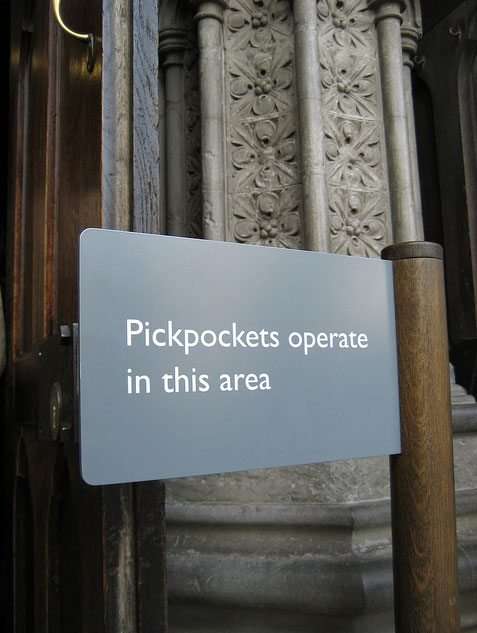
When visiting tourist destinations such as museums, monuments, and other places in the city, you are going to need money for entrance fees. The majority of the time you will have access to automatic tellers all over the city. There is no need to have all of your money with you. Take out what you need, per day and keep the cash you don’t need during that day in a safe in your hotel room. Think ahead, and by planning ahead you can also avoid long lines and detours to ATMs etc. Better yet,use apps or websites on your phone to purchase tickets and avoid cash altogether.
13. All or Nothing
When going out you don’t have to take everything, do you? Think, only take what you need. This means emptying your wallet a little: leaving some money, ID, credit cards or your passport locked in the hotel room safe so if you do get pickpocketed you don’t lose everything! If you don’t like doing this then split up your valuables between a wallet you keep in your front pocket or anti-theft travel purse and a hidden body pouch like a waist wallet or neck wallet. Those are much more difficult to steal from.
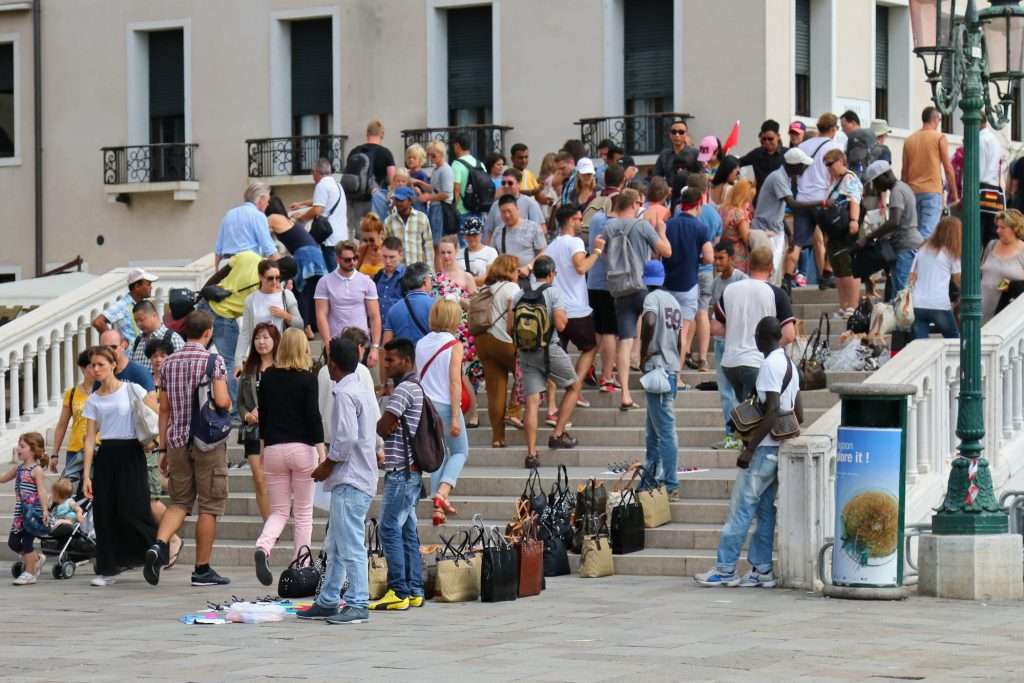
Protecting Your Belongings – Make it Difficult to get to Your Valuables
When carrying a purse or bag, wear the flap against your body and keep a hand on it
If you are a woman, only travel with purses that close with a single, central zipper (single entry point) or travel security purse that has built-in security features that keep out the hands of pickpockets. Travel purses or handbags like these are great. If you carry a regular, not security travel purse make sure it is carried with the zipper facing front and directly under your arm where an eye can be kept on it. Mini backpacks or purses that are open on top? Targets. If you have a flap on your purse or messenger bag, make sure it’s close against your body and not facing outwards. If you do decide to carry a daypack, consider a security daypack such as one of these which have built-in security zippers so pickpocket can’t get into the rear zippered compartments when you wear it in a crowd.
When eating or sitting, NEVER put your purse/bag on the ground or hang it on the chair behind you.
Countless bags are stolen from women when dining. Put it on your lap or on the table if it’s a small purse. If you’ve got longer straps or a single shoulder strap, hang the purse off your knee in front of you or put the strap under one of the chair legs. Consider one of the anti-theft purses with anti-snatching purse straps listed above.
Don’t keep important things in ANY outside pockets in your suitcase, jacket, or purse.
If you have to give pickpockets access to something (you have too much luggage or several bags) make sure it’s not worth taking. Keep underwear in outside luggage pockets and not important documents. Use inside pockets of jackets and purses that have a zipper and/or button to hold important documents, and take advantage of clothing layers to keep your documents buried as much as possible.
How to Avoid Pickpockets When Traveling
Be Careful of Purse and Pocket Cutters
Some pickpockets use a unique way of stealing wallets from the pockets of men, or from within purses. They are known as “purse cutters” or “pocket cutters” who use a thin razor blade to cut the pockets of pants or outside material of purses. While this is a very limited subset of skilled pickpockets, they do exist around the world. Your solution is to carry your wallet in your front pocket or use a travel bag constructed with hidden anti-slash material.
Use a Money Belt to Stop Pickpockets
This is perhaps the single most important thing you can do to lower the impact of a pickpocket. Use a money belt to keep your passport, extra credit cards and cash safe and out of sight. Keep that day’s cash and a credit card in your day purse/wallet for easy access. If you must get into your money belt, do it in a safe area like a bathroom stall or changing room. Getting into your money belt to make regular purchases is not an effective use of it and draws attention to where you store your money.
If you prefer to carry a money belt and/or passport holder, make sure you don’t advertise where it is. Many times I’ve seen tourists walking around with a very visible passport holder bouncing freely under their t-shirt, or with the neck cord poking out and trailing down their back. They might as well wear a bull’s-eye! I prefer to use a neck passport holder like this one and actually wear it around my waist, tucked into my pants (also a good alternative for summer when wearing light tops). It was comfortable and not as noticeable, or you can get the traditional money belt version or an actual belt to conceal currency. Some travelers prefer to hide things in their socks. I don’t recommend that as a strategy to stop pickpockets.
Bring the Bare Essentials When You Can
If you have a good base location such as a hotel or a friend’s house, why not lighten up what you’re carrying with you when going shopping, walking in crowded markets or areas? Some reputable hotels also offer safe services for valuables.
Don’t Place Your Wallet in Your Back Pocket
Pickpockets call the back pocket of a man’s pants the “sucker pocket” for a reason – it is the easiest to get into and remove a wallet. When possible use your front pocket to hold your wallet, as possibly consider carrying a special wallet designed with a material that is hard to remove without your knowledge. If you have your heart set on keeping your wallet in your back pocket, you should understand how thieves remove wallets from them, then take a few countermeasures.
The most common way for this to occur is by a pickpocket who places two fingers into the top of your back pocket and carefully lifting the lining of the pocket to bring your wallet to the thief’s hand; this is commonly referred to as “reefing.” Reefing keeps contact to a minimum and makes a much quicker retreat of the pickpocket possible. To make this type of theft more difficult for a pickpocket you can do two things (other than not carrying in the back pocket to begin with). First, place a thick rubber band around your wallet. The rubber band is rough and will create friction with your pocket lining so you will hopefully feel it being pulled out and can stop the pickpocket from stealing it. Second, place a semi-rigid card (a name card or a tag does nicely) in the pocket and covering your wallet to obstruct the lift. Again, do this to give you more time to notice the pick before the thief ends up with your wallet.
Using Public Transportation – Stay Balanced and Aware
Pickpockets are counting on your being unbalanced, distracted and crowded on public transportation. If you can, read about certain buses or public transportation that are most used by tourists – these are usually pickpocket buffets (the 64 bus from Termini to St. Peter’s in Rome is notorious for this).
When at Train or Subway Stations
Some thieves hang out at train-ticket machines, eager to assist you in buying tickets with a pile of your quickly disappearing foreign cash. When you are at the train station and someone who looks like an “official railroad attendant” offers you some help finding your seat – politely say “no thanks.” This is a common scam at many European train stations (especially in Rome). These “official-looking railroad attendants” will surely take you to your seat, but once you are there they will demand a tip. These are not railroad employees, just local scammers taking advantage of unsuspecting tourists.
Stand Defensive and Prepared
Swing any backpacks around to the front of your body and put your arms through the straps to keep your hands free. Not only will this help you keep an eye on it, it will make you more appreciated by regular riders as backpacks usually swing into people and take up more room. I used to tie the cords hanging off my backpack zippers together so it was harder to open. If rolling a piece of luggage, place it in front of you between you and your handhold, as close to a wall as possible.
Keep the Right Hands Occupied, and the Right Hands-Free
Keep a hand on your purse and close to your body and the other hand to stabilize your body while the public transportation is in motion. Don’t hold on with the same arm that should be protecting your bag! To further stabilize yourself, if you can’t get a seat, make sure to center your body in front of the pole, seat or other handhold so you won’t be thrown off-balance. Stand with your knees slightly bent to react with turns and bumps. Angle one foot in the direction of the braking action (forward for example).
Preparing Yourself Before a Trip
Before leaving, photocopy important documents and leave a copy with a relative/friend who can send them to you if necessary. Keep a list of contact numbers available in your suitcase for reporting stolen credit cards along with a copy of your passport and other important documents. Keep your email login credentials handy too.
Keep copies of your key documents on your phone, and make sure your phone is password protected.
I also keep these support numbers in an email draft sent to myself so that I can access them from any computer (please note: I am not recommending you store credit card numbers in an email, just the customer support numbers). This step helps if your phone is lost or stolen.
Copies of Travel Documents You Should have Access to
- Credit card and bank contact numbers
- Passports
- Travel reservation numbers
- Identification cards
- Prescriptions
Know the Pickpockets and Scam Artists’ “Tricks of the Trade”
For years, pickpockets have honed their skills on countless victims so the thieves and pickpockets don’t need to change their methods much; they just practice them until they’ve got it perfect. If a pickpocket is successfully in stealing your wallet, it will be because their method was new to you, but not to them. Here are a few of the distractions that pickpockets use to distract travelers and steal their property (refer to our other web pages for a more extensive list of these scams):
The Coin Con
Someone drops a bunch of coins on the floor of an airline terminal. Nice person that you are, you stoop down to help pick them up. Then an accomplice waltzes by, taking your laptop or luggage. Sexy distractions. A skirt is lifted, and so is the wallet of a man distracted by the sight. He should have kept that wallet in a hidden pouch instead of his back pocket or jacket pocket.
“Can I Read Your Palm and Tell You Your Fortune?
In Spain, scruffy women offer you sprigs of rosemary (a token of friendship), and then grab your hand, read your fortune, and demand payment. Don’t make eye contact, don’t accept a sprig, and say firmly but politely, “No, gracias.”
“Hellppp!”
You may think a swimmer is drowning, so — Samaritan that you are — you dash into the water. While you’re paddling out to the “victim,” an accomplice swipes the items you’ve left on the beach.
Splattttt!
Some white matter lands on your coat, and you assume a nasty pigeon has flown by. But, oh no, it’s a pickpocket who has distracted you with ice cream, toothpaste, or cigarette ashes. An accomplice wants to help you clean up and advises you to remove your coat. You know the rest.
“Hey, That Man Just Hit That Woman”
Know that pickpockets are very skilled in the art of theft and will create a variety of distractions to get travelers to “not pay attention to someone bumping into them” or “picking up a purse or travel bag” while they are watching what looks like some type of fight, scuffle, or shouting match. Know that when these acts occur around you, it may be a “set up” for other thieves who are working the crowd and looking for you to be distracted while they rip you off.
“Set Up Scams”
Set-up scams are time-tested and popular. On the busy streets of Barcelona, Berlin, and Florence, you’ll find the shell game, or its variation, the pea-and-carrot game. Players pay to guess which of the moving shells hides the ball. It looks easy, but the winners are all ringers, and you can be sure that you’ll lose if you play.
“Can You Tell Me Where I Can Find an ATM Machine?”
Whenever cash is involved, it pays to be alert. If someone offers to help you use a cash machine, politely refuse (the person wants your PIN code). If a cash machine eats your ATM card, check for a thin plastic insert with a little flap hanging out — crooks use tweezers to extract your card. Cashiers, and even bank tellers, thrive on the “slow count,” dealing out change with odd pauses in hopes that rushed tourists will gather up the money early and say “Grazie.” Also, be careful when paying with large bills in restaurants and stores, and always inspect your change for wrong currancy— in Italy, the old 500-lira coins (worth nothing) look like 2-euro coins (worth nearly $3).
We’re the “Tourist Police” and We’re Here to Help
Just because someone looks official doesn’t mean they are. In Italy, “Tourist Police” may stop you on the street, flash their bogus badges, and ask to check your wallet for counterfeit bills or “drug money.” You won’t even notice some bills are missing until after they leave.
Fake “Hotel Inspectors”
Never open your door to “hotel inspectors.” These scammers will knock on your door, look official, and may even show some type of bogus ID to make them look the part. One and tell you that they are “Hotel Inspectors.” One of the thieves waits outside while the other comes in to take a look around. While you’re distracted, the first thief slips in and snags valuables off your dresser.
You Can’t Come to This City Without Seeing a Play or Concert
In Vienna, official-looking women decked out in long velvet capes roam famous sights, claiming to work for the opera house and offering to sell you tickets. The tickets are fakes, and the only seats you’ll be buying are the ones on the bus back to your hotel.
A Final Note on How to Avoid Pickpockets
The above pickpocket prevention information is the most practical and logical way you can easily integrate pickpocket prevention techniques into your trip without ruining your trip. Keep in mind that trips are to be enjoyed – but just remember that a little preparation goes a long way. You never fully appreciate how important your wallet or purse contents are until they’re gone. And being just a little cautious will result in a better experience for you and those around you. Use your instincts and a little common sense to avoid pickpockets and being a victim, so you can enjoy the sights and beauty of your host country!
More Articles You May Like
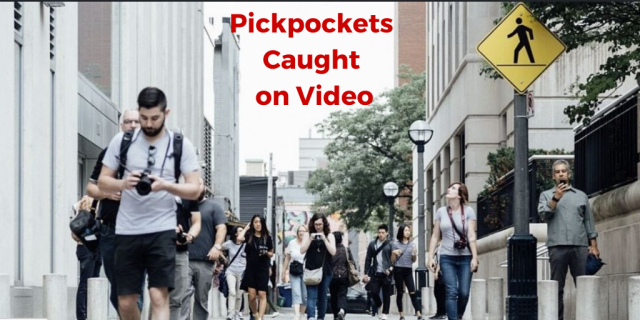

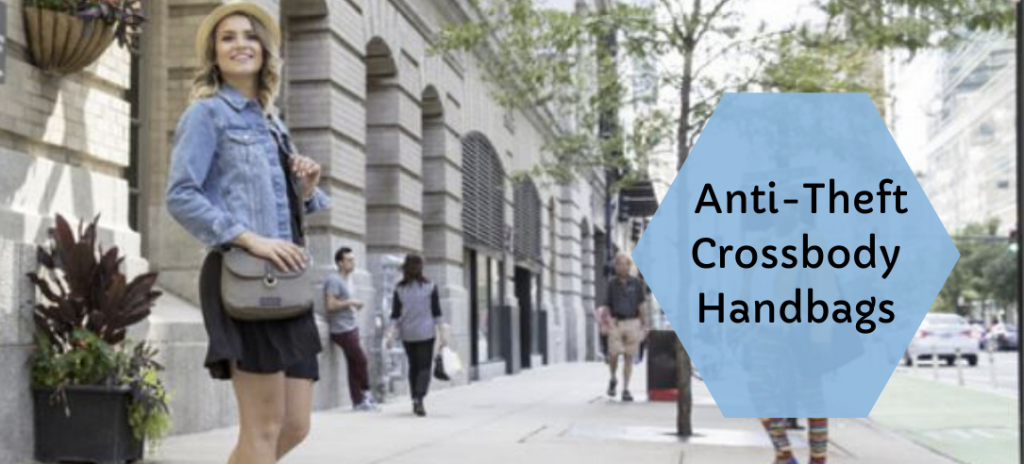
your lifetime. However, pickpockets come in a variety of levels of expertise from the expert to the opportunist. Falling victim to either one and losing your credit cards, as well as your passport and currency or phone can really put a crimp on your vacation abroad. Even seasoned travelers can fall victim to a distraction and be pickpocketed. See how easily you can be distracted by one thief while an accomplice relieves you of your valuables.
that have built-in pickpocket prevention features.



